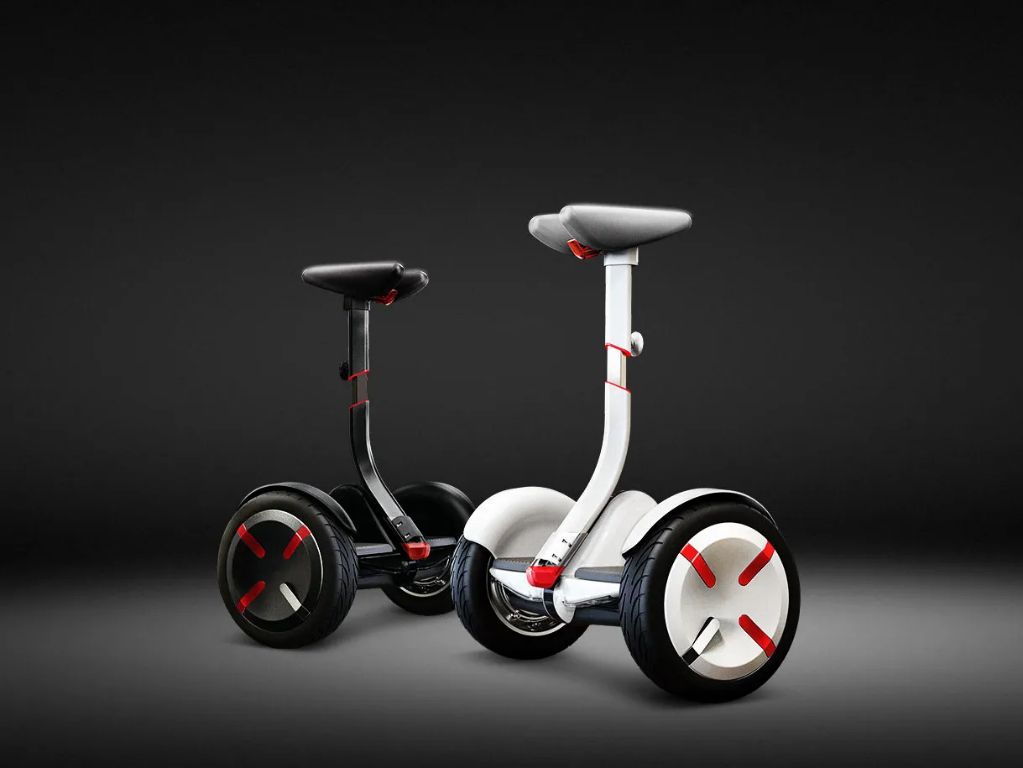What Are Those Electric Wheels Called?
Introducing Electric Wheels
Electric wheels refer to personal mobility devices that use one or more electric motors to propel the user. They come in different form factors, the most common being the electric unicycle and electric skateboard.
The first electric unicycle was patented in 1869 by Richard C. Hemming, which used pedal power. The first motorized version was developed in the late 1890s. Various motorized monowheels continued to be developed in the early 20th century.[1]
Compared to non-motorized wheels, electric wheels offer greater speed, range, and terrain handling. The self-balancing technology allows hands-free operation. Most models have powerful lithium-ion batteries, speeds up to 50 kph, and over 50 km range per charge.
Key features and benefits of electric wheels:
- Compact, lightweight and portable
- Fun way to travel with intuitive steering
- Zero emissions and environmentally friendly
- Relatively affordable compared to cars or motorcycles
- Provide health benefits with physical movement involvement
Common Names and Types

A popular type of electric wheel is self-balancing personal transportation devices, more commonly known as hoverboards or mini-Segways. They have two wheels arranged side-by-side with a platform between them for the rider to stand on. The wheels contain gyroscopes and accelerometers that enable them to balance on their own while in motion so the user can simply lean in the direction they want to travel. Some brand names for these devices include Airwheel, Epikgo, Gotrax, Hovertrax, Jetson, Ninebot, PhunkeeDuck, Razor Hovertrax, Skque, Swagtron, Segway miniPRO and more.
Another type is the electric unicycle or monowheel, which has a single large wheel with foot platforms for the rider to stand on. These allow quick movement through tight spaces while also being able to take corners easily (“9 Types of Electric Personal Transportation Vehicles”). Popular brand names include InMotion, King Song, Gotway, Veteran, and Ninebot.
Electric skateboards operate much like traditional skateboards but with an electric motor to propel the rider. The motorized wheels allow the rider to reach higher speeds with less effort. Some brands of electric skateboards include Boosted, Evolv, Ecomobl, Acton and Yuneec.
How They Work
Electric self-balancing wheels, also known as hoverboards or segways, utilize advanced gyroscope and tilt sensors to enable riders to steer simply by leaning forward, backward, left or right. According to Planet Energies, gyroscopes within the wheels measure the angular velocity of the board and send this data to an onboard computer. This allows the board to know the exact position of the rider at all times.
The motors in each wheel also contain tilt sensors. When the rider leans in a certain direction, the tilt sensors communicate this to the central computer. Based on the data from both the gyroscopes and tilt sensors, the computer adjusts the speed of each wheel’s individual motor to move the board and rider smoothly in the desired direction.
As explained by Hoverboard NZ, the synchronized communication between the gyroscopes, tilt sensors, motors and central computer is what provides the self-balancing feature. Even on bumpy terrain, the sensors quickly detect changes in position and the computer instantly adjusts each wheel’s motor to keep the board upright.
Safety Features and Considerations
Electric wheels like electric unicycles, Onewheels, and other self-balancing models require riders to maintain balance and control at all times. This can make them challenging for beginners and means safety gear is highly recommended.
Most models have built-in safety features like speed limits, battery indicators, headlights and brake lights. However, there are still risks involved. According to the CPSC, there have been multiple injuries and at least 4 deaths associated with Onewheel electric skateboards (source).
To ride safely, follow all manufacturer guidelines for weight limits, top speeds, and terrain. Wear a helmet, gloves, elbow/knee pads, and wrist guards. Learn at low speeds in open areas without traffic or obstacles. Quick accelerations, abrupt turns, and uneven surfaces can all lead to loss of control and falls.
While thrilling to ride, electric wheels do carry more risk than traditional mobility devices. Understanding the limitations and practicing defensive riding is key to staying safe.
Legal Status
Generally, electric scooters and wheels are treated the same as bicycles and are allowed in most public spaces. There are some exceptions and regulations that vary by state and local jurisdiction:
In the U.S., no license, registration or insurance is required to operate an electric scooter. However, some states require users to have a driver’s license or learners permit. The minimum age to ride ranges from 14-18 years depending on the state.
Helmet laws also differ. In some places like California, helmets are required for anyone under 18. Other states have no helmet requirements. It’s a good idea to wear a helmet regardless of the law.
Most areas allow electric scooters on public roads, bike lanes and paths. However, sidewalk riding may be prohibited in some cities. Most states consider electric scooters to be “motorized vehicles” so riding on highways and interstates is illegal.
Speed limits, night riding rules, passenger restrictions, and other regulations can also vary in each state, county and city. It’s important to check your local laws before riding an electric scooter or wheel on public roads.
Outside the U.S., the legal status can differ greatly. Some countries like the UK broadly allow use on roads and paths, while others like Singapore heavily restrict where they can be ridden.
Sources:
Are electric scooters legal in the USA? The law explained
Understanding electric scooter laws in the USA
Costs
Electric wheel prices can vary substantially based on the model type, features, and quality. Here is an overview of price ranges:
- Entry-level electric wheelchairs typically range from $1,500 – $5,000, offering basic functionality and standard features.
- Mid-range models cost $5,000 – $8,000, providing greater range, speed, comfort and more advanced capabilities.
- High-end electric wheelchairs start at around $8,000, going up to $14,900 or more. These chairs have the latest technology, longest battery life, smoothest ride, and most customization options.
- Used and refurbished electric wheelchairs can cost 50-75% less than new models. Online marketplaces frequently have deals on pre-owned chairs.
Additional factors impacting price are weight capacity, top speed, wheel configuration, customization, and brand reputation. Overall, electric wheels provide mobility at a wide span of price points.
Performance Specs
Electric wheels can offer impressive performance capabilities. For example, the Audi e-tron GT has a maximum power output of up to 637 horsepower and can accelerate from 0-60 mph in just 3.1 seconds. It has a top speed of 155 mph. The e-tron GT features a 93.4 kWh battery providing an estimated range of around 238 miles on a single charge.
Other electric vehicles like the Tesla Model S can reach speeds up to 163 mph thanks to dual motor all-wheel drive providing up to 1020 horsepower. Depending on the battery size, the Model S range is estimated between 348 to 405 miles per charge.
The power and performance of electric wheels really comes down to the motor and battery specs. In-wheel electric motors from Protean can deliver up to 180 kW (240 hp) of power per wheel, giving sports car levels of performance in a standard vehicle.
Maintenance
Proper maintenance is crucial for keeping electric wheels in optimal condition and extending their lifespan. Here are some key maintenance tips:
Charging
Recharge the battery after every ride following the manufacturer’s guidelines. Use only the charger designed for your model. Never leave batteries charging unattended or overnight (https://getwhizz.com/blog/how-to-maintain-electric-bike/). Allowing batteries to fully deplete can damage them.
Tire Pressure
Check tire pressure regularly and inflate to the PSI recommended by the manufacturer. Underinflated tires can cause poor handling, reduce range, and lead to flats (https://www.youtube.com/watch?v=sp1SzbKxcWY). Keep tires properly inflated for optimal performance.
Cleaning
Clean the wheels, tires, and body regularly using a soft brush, cloth, or compressed air to remove dirt and debris. Avoid using water or harsh chemicals. Check for rust, corrosion, cracks, or damage. Lubricate moving parts. Keep components clean and dry (https://alienrides.com/blogs/news/electric-unicycles-complete-maintenance-guide).
Part Replacement
Replace worn parts like brake pads, tires, bearings, and lights when needed. Use manufacturer recommended parts to ensure proper fit and function. Inspect parts regularly and replace promptly when wear is detected.
Where to Buy
Electric wheels can be purchased both online and in-store from various retailers. Some of the top places to buy electric wheels include:
Online:
- Amazon – Amazon sells a variety of electric wheel brands such as Gotrax, InMotion, and more. Many electric wheels qualify for Prime shipping. Electric Wheel – Amazon
- Alibaba – This site allows you to order electric wheels wholesale directly from manufacturers, mainly located in China. There is a wide selection of hub motor and self-balancing wheel models. Electric Wheel – Alibaba
- eBikeling – An online electric bike shop with a category for electric hub motor wheels. They carry popular wheel sizes from 20″ to 700c. Electric Motor Hub Wheel For Sale – eBikeling
In-Store:
Major retailers like Best Buy, Target, and Walmart sell a limited selection of electric wheel models and brands in their sporting goods departments. Specialty stores like Cycle Gear and sports outfitters like REI also carry electric wheels. Local bike shops may offer electric wheel conversion kits to electrify a regular bike.
The Future
The future of electric wheels looks bright as the technology continues to evolve and improve. Major automakers like Tesla are investing heavily in next-generation electric drivetrains, including in-wheel motors which integrate the motor directly into the wheel hub (CNN, 2022). This promises benefits like simpler mechanical design, better weight distribution, and precision torque control for each wheel.
Analysts predict strong growth for in-wheel and other integrated electric motors in coming years as electrification transforms the auto industry. Per McKinsey, the global market for in-wheel motors could expand at a compound annual growth rate of over 40% through 2030, reaching nearly $30 billion in annual sales as electric vehicles gain mainstream popularity (McKinsey, 2023).
Future innovations may enable smart, connected wheels with advanced sensing and autonomous driving capabilities. Over time, costs should come down as production scales up. With exciting developments on the horizon, electric wheel technology will shape the future of sustainable and efficient urban mobility.


